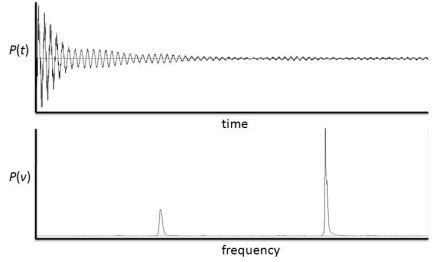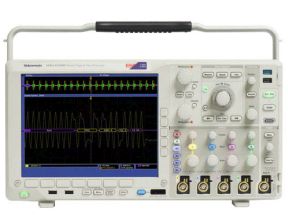The Fourier Transform emerged from Joseph Fourier’s Analytic Theory of Heat (1822). Back then, of course, the focus was not on the behavior of electricity. Fourier’s insights pertained to non-electrical wave motion as in acoustics and propagation of energy in bodies of water.
At present, Fourier analysis/synthesis has become applicable to electrical and electromagnetic fluctuation as well as data propagation. The Fourier transform, either as end product or process, typically relates to the translation between time domain and frequency domain. It can go either way and there is total correlation between these two views of any wave function. In moving from one to the other, information is neither gained nor lost.

Fourier’s insight that led to his great achievement was that any function of a variable, whether continuous or discontinuous, can be expanded in a series of sines of multiples of the variable. To make it totally correct, some aspects of this basic equivalent have been subject to a certain amount of revision over the centuries, but the fundamental innovation has been of immense value in interpreting a wide variety of phenomena in nature and in the field of electronics.
As originally proposed, the mathematics involved in moving from one domain to the other was harrowing, but beginning in 1965 an algorithm known as the Fast Fourier Transform (FFT) became widely known. FFT greatly facilitates Fourier’s transform, making use of matrix decomposition to factor the discrete Fourier transform into an array of sparse factors.

A mixed-signal oscilloscope such as the Tektronix MDO 3104 is capable of constructing Fast Fourier Transforms with push-button ease. Time and frequency versions can be combined in a single display.
In 1956, American physicist Hugh Everett wrote a paper, not published until 1973, titled The Theory of the Universal Wavefunction. The idea is that there is a universal wave function that underlies all reality. This notion historically permutes to the concept of a many-worlds interpretation of quantum mechanics. According to Everett’s line of thinking, the universal wave function is the quantum state of the totality of existence, a fundamental entity conforming always to a deterministic wave equation.
This theory, along with the many-worlds interpretation, has been roundly criticized on logical grounds. Nevertheless, it has been a source of speculation by Stephen Hawking, who derived the solution to an equation that may explain the initial conditions at the event we call the Big Bang.
Many thinkers draw the line at such rarified speculations. Others go so far as to hold that the oscilloscope, at its present rate of enhancement, will at some point become a window into the most profound mysteries of existence.

Leave a Reply
You must be logged in to post a comment.